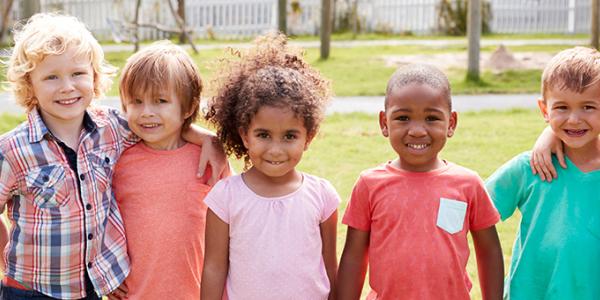The Role Of Relationships in Children's Use Of Technology

This blog post was originally published in the Fred Rogers Center for Early Learning and Children's Media at Saint Vincent College blog.
Technology and digital media are an integral part of many adults’ lives, and the same is true for many children today. Not long ago, the conversation about digital media and early childhood learning focused on whether or not these new technologies should be part of early childhood education, at home or at school. But in recent years, the conversation has shifted to an acknowledgment that these things are a part of learning.
The Fred Rogers Center and the National Association for the Education of Young Children (NAEYC) were at the forefront of this shifting discourse more than four years ago with the publication of a joint position statement on “Technology and Interactive Media as Tools in Early Childhood Programs.”
Conversations about the place of digital media in early childhood education continue at events such as the NAEYC conference, which is the largest gathering of early childhood professionals in the U.S. The 2016 conference was held in November in Los Angeles, CA. Not surprisingly, technology and media was a dominant theme throughout the conference.
Only a few weeks before the conference, the American Association of Pediatrics (AAP) released a new policy statement, “Media and Young Minds,” which updates their family guidelines for managing young children’s media usage. The announcement of this policy statement was widely covered in the national media, signaling a broad public interest in these issues.
In this current conversation about media, technology and children’s learning, the focus has been on the importance of human interaction in relation to children’s media and technology use. This is reassuring to hear. The most current research is beginning to make clear that while digital media can provide significant learning benefits for young learners, the adult-child relationship is essential to obtaining these learning benefits. Our work at the Fred Rogers Center has consistently tried to echo this theme, with or without technology.
Fred said, “It’s through relationships that we grow best—and learn best.” We think this straightforward statement might offer the most essential clue to understanding how children gain the most learning benefit from their interactions with media and technology. Building on this, the essential question might be:
How does a child’s interaction with media and technology strengthen relationships?
We think it might be helpful to think about a child’s relationships in three ways:
1) The child’s relationship to self: We might ask how the experience helps a child to understand and express him- or herself and to develop both competence and confidence.
2) The child’s relationship to others: How does the experience help a child to connect, collaborate and share ideas with peers, family and others?
3) The child’s relationship to the larger world, community and environment: For example, how might the experience help a child appreciate the natural world or gain understanding and empathy for the lives of people and other creatures near and far?
This focus on relationships in all of their diverse forms aligns with the message of Fred Rogers, who spoke about media, technology and children in a far less media-saturated time: “No matter how helpful they are as tools (and, of course, they can be very helpful tools), computers don’t begin to compare in significance to the teacher-child relationship which is human and mutual. A computer can help you to learn to spell H-U-G, but it can never know the risk or the joy of actually giving or receiving one.”
As Fred knew, children become much more ready to learn when adult-child relationships are established. These relationships also enable the media experiences to contribute positively to a child’s social and emotional development. At the NAEYC conference, many strategies of joint engagement and media mentorship were recommended, such as co-viewing of media; asking children questions about a game they are playing; or making connections to content viewed in a program to the child’s environment. The AAP’s new guidelines provide recommendations on joint engagement strategies as well as on how much time children spend with media.
Technology and media are present in so many aspects of life that it is nearly impossible to imagine a one-size-fit-all approach of limits and restrictions that could meet the diverse needs of children and families. Earlier attempts that focused limitations on screen time do not address the nuanced nature of current technology and media interactions.
Following from Fred’s belief in “simple and deep,” we at the Center are looking for a simpler and clearer message to help guide parents, caregivers and educators as they navigate their own children’s media and technology use. Every child, family and context is unique, and any guidance should reflect and support individual decisions. In a recent conversation we had with Michael Rich, Director of the Center on Media and Child Health at Harvard Medical Center, he advised, “Our focus should be on living well with media rather than opposing or restricting it.”
There are, of course, many complex factors that will determine the quality of learning opportunities with media and technology. There are many trusted organizations working to help sort media and use based upon it being developmentally and content appropriate, having potential educational value, and promoting physical and mental health for children. But we think this focus on the idea of relationship is the most essential. It will not be the media and technology alone, but rather our use and practice together, that will help to support children to grow as confident, competent and caring human beings.
Jeremy Boyle, M.F.A, is Assistant Professor of Learning, Media and Design at the Fred Rogers Center for Early Learning and Children’s Media at Saint Vincent College